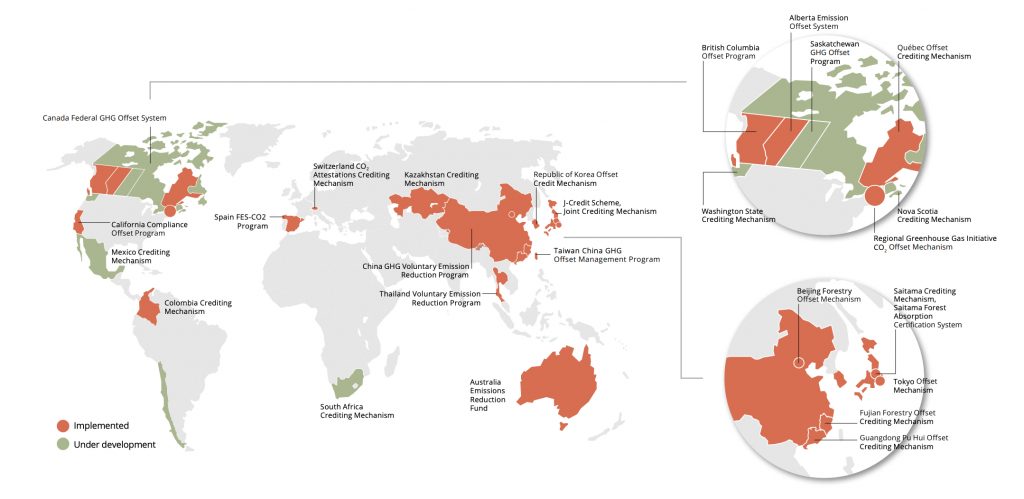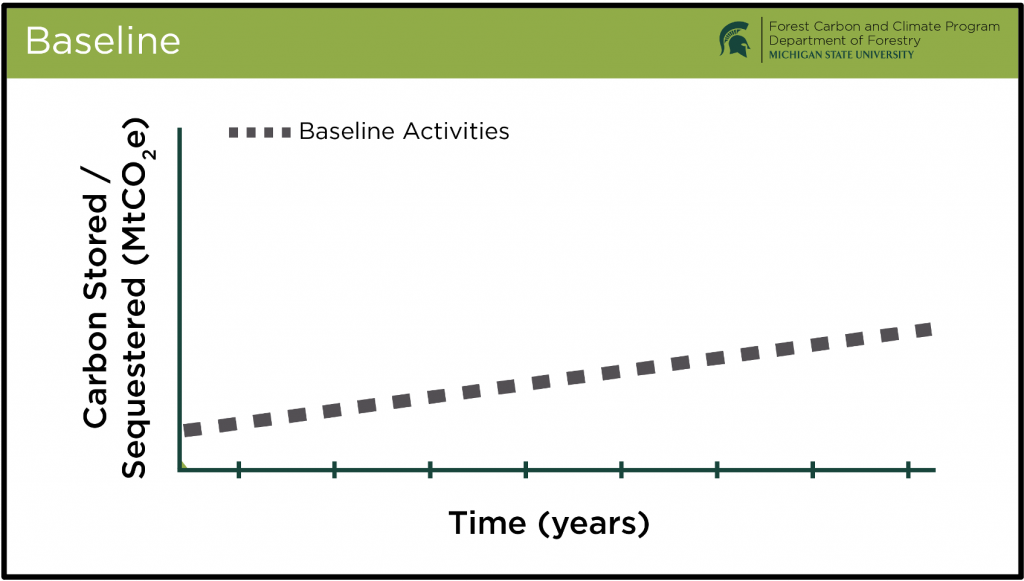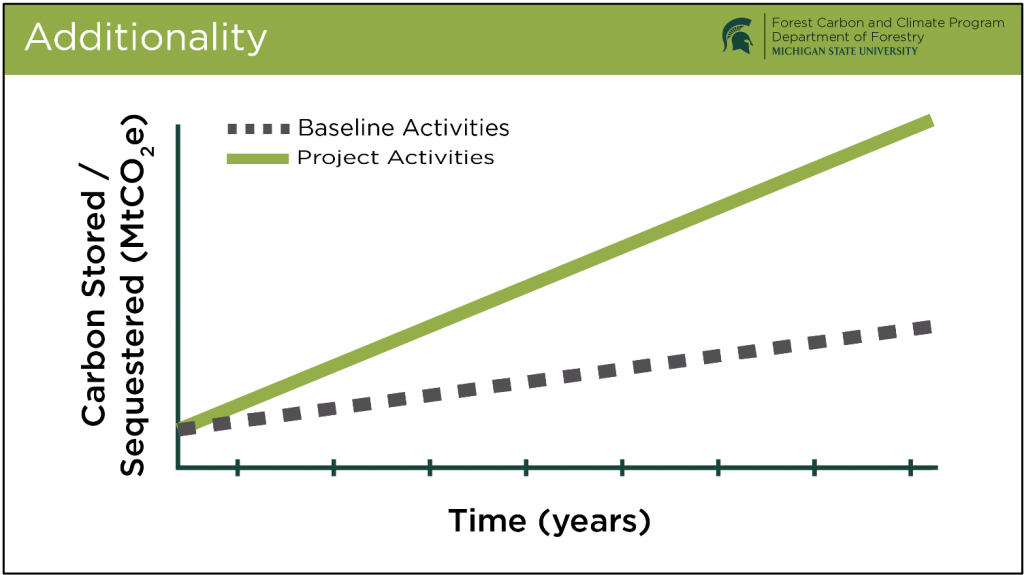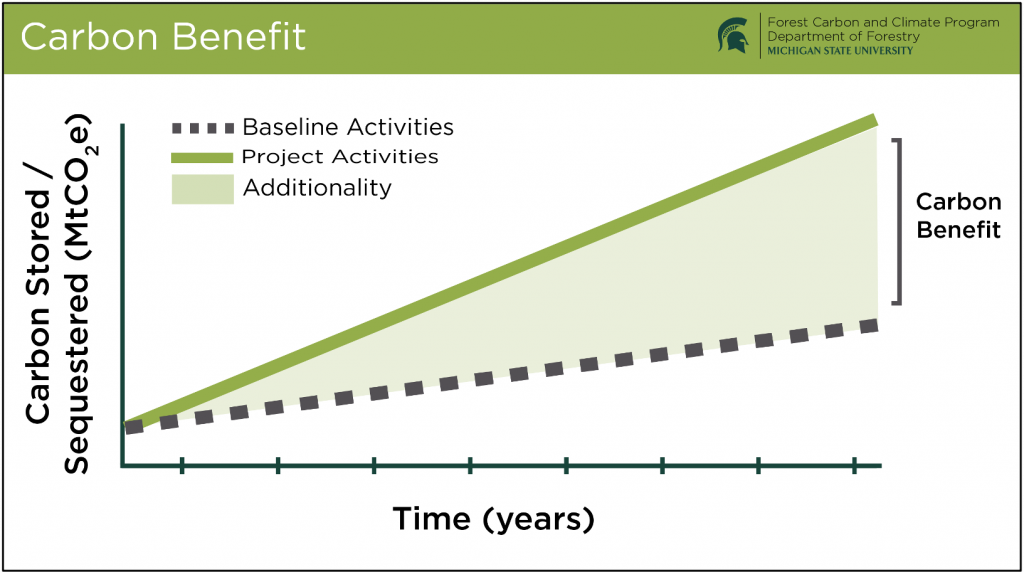Forestry carbon offset is a practice that involves investing in forestry projects to counterbalance, or offset, carbon dioxide emissions. These projects can take many forms, including reforestation (planting trees in areas where forests have been cut down), afforestation (planting trees in areas where there were no forests), and improved forest management. Forests act as carbon sinks, absorbing carbon dioxide from the atmosphere during photosynthesis, and storing it in their biomass. By investing in forestry carbon offset projects, companies or individuals can compensate for their carbon emissions, effectively reducing their net impact on the climate. However, it’s critical that these projects are carefully managed to ensure that they result in real, permanent, and additional carbon sequestration, and that they do not lead to unintended social or environmental consequences.
Map Source: World Bank
Forestry carbon offsets play significant roles in both the compliance and voluntary carbon markets. In the compliance market, companies are required by law to reduce their emissions to a certain level; if they can’t achieve this through their own direct emission reductions, they can purchase forestry carbon offsets to meet their compliance obligations. This approach is used in various cap-and-trade systems, such as the California Compliance Offset Program in California Cap-and-Trade Program. In the voluntary market, organizations or individuals purchase carbon offsets to mitigate their own carbon emissions, often as part of a broader sustainability strategy or in response to pressure from consumers, investors, or other stakeholders. This isn’t required by law, but can help organizations demonstrate their commitment to sustainability and climate action. Regardless of the market, it’s essential that the purchased offsets represent real, verifiable, and additional emission reductions, to ensure the integrity of these markets and their effectiveness in combating climate change.
Additionality
The concept of “additionality” is a critical component of forest carbon offset projects. Additionality refers to the idea that the greenhouse gas reductions provided by an offset project must be “additional” to what would have occurred if the project had not been implemented. In other words, the project must lead to emission reductions that wouldn’t have happened under a business-as-usual scenario. For forest carbon offset projects, this might mean demonstrating that without the project, the forest would have been logged or degraded, and thus unable to sequester as much carbon. Verifying additionality can be complex, but it’s crucial to ensure that offset projects are truly contributing to additional emission reductions beyond what would have happened anyway. Without confirmed additionality, there’s a risk that offset projects may simply be paying for carbon sequestration that would have occurred even without the investment, undermining the effectiveness of these projects in combating climate change.





